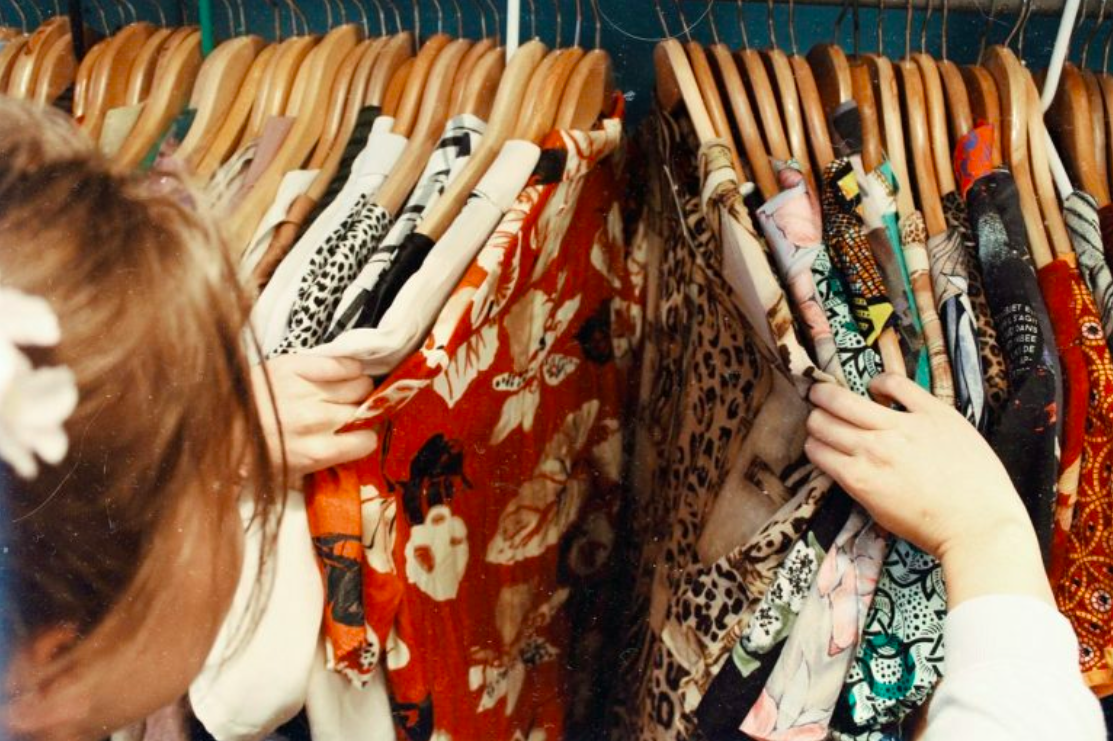
NANDITHA NAIR – NOVEMBER 19TH, 2019 EDITOR: ABHISHEK ROY
Prior to the industrialization of the fashion industry, the lower classes relied on homespun fabrics which were made through hand warping, a time-consuming process. These items were mended, reused, resized, and remade into new pieces until they were beyond wear—and even then, those scraps were used to stuff furniture. Even for the rich, consumption of fashion was quite limited. Any reader of Edith Wharton can tell you that the affluent and elegant ladies of the West in the late 19th century made, at most, an annual trip to the world’s fashion capital in Paris to buy the following year’s wardrobe, and that quality was always valued over quantity.
However, with the development of new technologies such as the spinning jenny, the sewing machine, and a system of standard sizing, it became possible for ready-made clothing to be manufactured en masse at low costs and sold at cheap prices. Naturally, as prices—at least outside of haute couture—dropped, consumption patterns also evolved. Lower prices meant that clothes were now considered more disposable, even for those in lower income brackets. Mainstream clothes manufacturers responded in turn to this change in mentality by churning out more and more “seasons” or sets of styles—from 11 to 52 seasons a year by 2014—resulting in the highly consumerist “fast fashion” industry of today, where keeping up with the latest trends is the order of the day. With such fleeting fads dictating purchasing habits, gone were the days of buying pieces that could last half a lifetime.
The 19th century industrial revolution, along with making manufacturing and consumption cheaper, created highly populated urban centers that produced large amounts of waste in a limited space. Consequently, central waste management systems were implemented by governments to deal with increasingly consumerist lifestyles and to improve sanitation and health. As waste disposal systems developed in the United States under the likes of pioneers such as Waring in the late 1800s, second-hand clothing stores and pawnshops began to appear in response to textile wastes. Despite hygiene concerns and racial stigmas which discouraged buying second-hand, these resale stores were well established by the 1920s and continued to grow with immigrant populations, whose main business involved peddling, after tailoring (p. 29, Le Zotte). This was in part thanks to the efforts of charity stores run by Christian organisations such as the Salvation Army, which helped further destigmatize the practice of buying second-hand. Since then, “thrift stores,” as they have come to be known, have had a stable role in American society.
But in the past decade, thrifting has taken on a completely new life, especially among individuals of Generation Z, born between 1995 and 2010. The reasons behind the rise of thrifting are numerous. For one, the fast fashion industry has faced persistent scrutiny in the past decade following numerous controversies regarding the unethical treatment of its workers and unsafe working conditions in garment factories, most notably after the 2013 collapse of Rana Plaza in Dhaka, Bangladesh. These revelations have encouraged discourse amongst the global consumer base about the ethics of fast fashion consumption, discouraging the practice in favor of circular fashion, and have resulted in greater transparency regarding garment supply chains from brands, such as H&M and Gap.
Secondly, Gen Z and Gen Y are, reportedly, more concerned about climate change compared to older generations. According to McKinsey’s “The State of Fashion 2019” report, “Nine in ten Generation Z consumers believe companies have a responsibility to address environmental and social issues.” Across all industries, companies have not been blind to the impact of these environmental interests on consumer choices. In the fashion industry, many of the hottest brands on the market (in terms of editorial recognition and celebrity endorsements), such as Reformation and Everlane, are ones that strive to treat their workers ethically, to minimize the consumption of resources such as water, and to reduce their environmental impact by using recycled fabrics and less toxic production methods. However, these sustainable and ethical brands are often much pricier than their fast-fashion counterparts. Thrift stores, therefore, service the environmentally and ethically conscious consumers of today who do not have the resources to buy from such brands.
Lastly, the internet has played a critical role in the rise of thrifting. The pressure to stay trendy is inevitable in a market where mainstream brands like Zara and H&M ship out new styles to stores biweekly, weekly, or even daily. Social media giants like Instagram and Youtube have no doubt reinforced these societal pressures, resulting in consumption habits that have been both unhealthy for both our bank accounts and the Earth. However, popular social media accounts like bestdressed, which showcase thrift-shopping finds and DIYs, have conversely increased the popularity of buying second-hand in order to maintain a trendy image on a tight budget. In addition, online second-hand resale platforms like ThredUP and mobile resale apps like Depop, have supported the shift towards thrifting. The McKinsey report on Generation Z identified its tendency to view consumption as “an expression of individual identity” and its appreciation of uniqueness. Thrift stores, with their one-of-a-kind donated pieces, therefore cater to these desires in a way that mainstream brands cannot.
All this seems like cause for celebration or, at the very least, lends some support to any self-perceived moral superiority held by Gen Z. However, what does all this mean for low-income consumers for whom the concept of thrifting was created in the first place?
The rising popularity of thrifting among more wealthy consumers as an alternative to buying from sustainable and ethical fashion brands reduces the already limited options available to low-income communities when it comes to clothing. Thrifting no longer carries strong taboos of uncleanliness and poverty as it had in the past. So, in the name of eco-consciousness, many demographics that could afford to splurge on high-quality, low-impact purchases are deciding to thrift instead. This means there are less quality items left on the thrift store shelves for those who truly have no other affordable options, say, for buying professional attire that could mean the difference between impressing or crashing at a job interview.
In addition, larger sizes are rare in thrift stores, just as they are in brand-name stores. Since the poor are disproportionately more obese than the rich, one has to be especially conscious of the effect of thrifting on such pieces. For all their online hype, DIY-ing clothing projects popularised online by creators like coolirpa often rely on thrifting plus-size clothing and crafting them into more stylish pieces meant for thin bodies. Such that, even if one does place these newly styled items back on the thrift market, they now serve a considerably smaller and more privileged demographic.
Furthermore, many individuals exploit their online popularity to make businesses out of reselling thrifted items at marked-up prices. Depop is notorious for this—some of its most popular users, who started out simply revamping their wardrobe on the cheap, now go thrifting exclusively to find items to resell for a profit on the app. Unique and vintage items at affordable prices targeted towards underprivileged and marginalized communities then end up on an online marketplace that serves both consumers looking to dress respectably on a budget and those who are invested in finding a unique look for any price. This is especially problematic when one considers that the privileged are at an advantage when engaging in such ‘entrepreneurial’ activities, which require the time-consuming practice of sifting through thrift stores and the time-flexibility of being able to visit these stores soon after they are restocked, which working individuals simply do not have. Popular users on the platform, like Bella McFadden aka “Internet Girl” and Celia Hodgson, started off selling unwanted pieces at large markups. One popular seller explains that her sale of a pair of trousers bought at £10 and sold on Depop for £45 was what got her into the business. The time and energy invested by such users into finding rare pieces and curating styles warrants a markup in prices, similar to sneaker resale markets where individuals like Josh Luber stand in queues for days to buy limited edition shoes and resell them for a profit. However, the moral question of how high that profit should be allowed to go requires serious thought, considering that such activity excludes lower-income communities from products which they otherwise had access to.
And if that wasn’t enough, the rise of thrifting may be cause for spending practices to shift even more towards quantity over quality. Since the value we place on items is often a reflection of their price, getting cheap finds at thrift stores may contribute to a culture of not maintaining and caring for the items that we buy, at least when it comes to higher-income consumer brackets. The high transactional utility, a concept which describes the happiness derived from getting a purchase at a discounted price, involved in thrifting can also lead to more purchases, eco-friendly or not. This works decidedly against any minimalist ideologies that proponents of thrifting often praise. Furthermore, combined with the idea that thrifting ‘saves the planet,’ the current popularity of thrifting could be a recipe for guilt-free and highly consumerist shopping habits under the guise of social awareness.
On the whole, resale apps like Depop and thrifting present an optimistic change. The rise of thrifting entails an increase in donated materials, which requires that the consumer base also increases alongside it in order to prevent excess supply from going to landfills or being sent to the third world, where they saturate clothing markets and prevent the local clothing industries from flourishing. More purchases are not necessarily an issue as long as these are recirculated into the thrift market rather than ending up in the trash (i.e., the practices of donation and thrifting go hand in hand). Some thrift stores also actively combat class privilege by ensuring that poor communities get first pick of incoming stock. And if the stores in question are also non-profits which reinvest into the development of poor communities—like Goodwill and Housing Works (compared to for-profit thrift stores, such as Savers and Buffalo Exchange)—that gives even more reason to support the shift to thrifting. In conclusion, both store owners and individual consumers must recognize their privilege when participating on the second-hand market in order to ensure that communities in need are being served alongside any strides made towards environmental friendliness.
Featured Image Source: 9Lives
Disclaimer: The views published in this journal are those of the individual authors or speakers and do not necessarily reflect the position or policy of Berkeley Economic Review staff, the Undergraduate Economics Association, the UC Berkeley Economics Department and faculty, or the University of California, Berkeley in general.




This is the perfect blog for anyone who wants to know about this topic. The article is nice and it’s pleasant to read. I have known very important things over here. Thank you so much for this post.
Thank you so much for this article. I tend to congratulate myself on cheap finds at the thrift store without thinking twice about the class privilege and consumerist habits I’ve brought into these spaces. It is commendable that Gen Z is striving to consume fashion more ethically and responsibly, but we still have a long way to go.
Not a single claim was backed up. I’m open to the idea that trendy thrifting affects socioeconomically underprivileged individuals but every claim in this article might as well be opinions and hypotheticals.
I want to thank you for your time for this wonderful Article!!
I was looking for this information relating to rise of thrifting solution to fast fashion or stealing from the poor . You have really eased my work, loved your writing skill as well. I like how you have researched and presented these exact points so clearly. Please keep sharing more!